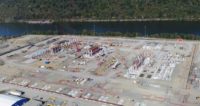Whether it’s a university seeking to attract prospective students, a suburban hospital aiming to draw more patients or a corporation recruiting employees, MidAtlantic owners are keeping the region’s construction and renovation market active. “They are playing to win,” says David Lambertsen, director of business development at HSC Builders & Construction Managers. “Markets are competitive, and as the density of the region increases, the institutions are trying to improve and increase their competitive edge with the best possible facilities.”
This cut-throat marketplace is reflected in this year’s ENR MidAtlantic Top Starts list. The ranking includes 50 projects that exceed $105 million—a notable uptick from last year, when the least expensive contract on the list was $83.5 million.
Based on Dodge Data & Analytics information and input from contractors, the Top Starts list ranks the largest projects by total cost that broke ground during 2016 in the region, which includes Delaware, Maryland, Pennsylvania, Virginia, West Virginia and the District of Columbia. The 50 projects totaled $9.7 billion. Last year’s list, which tracked only 25 projects, totaled $5.7 billion.
|
ENR MidAtlantic 2016 Top Starts |
Seven hospital projects are on this year’s list, including the $331-million Washington Adventist Hospital in White Oak, Md. Two other hospitals on the roster —the $200-million Bryn Mawr Hospital expansion and renovation in Pennsylvania and the $150-million infrastructure master plan for A.I. duPont Hospital for Children in Wilmington, Del.—are being managed by HSC Builders & Construction Managers, Exton, Pa.
HSC’s Lambertsen says the modernization of older facilities is one reason for the regional health care sector’s growth. Suburban hospitals are pushing to increase their technological offerings to discourage patients from seeking care in urban medical centers. Accomplishing that goal requires “a tremendous amount of infrastructure improvements, technology, energy, wiring and data, because the whole world has changed in last 20 years and facilities are truly obsolete,” he says.
Four large power generation projects top the list, including the $1.2-billion Lackawanna Energy Center in Jessup, Pa., and the $900-million Moxie Freedom Generation Plant in Salem Township, Pa. The largest overall contract is the $1.3-billion Greensville County Power Station in Emporia, Va., which Fluor is engineering, designing and building.
David W. Williams, Fluor vice president of power sales, says gas-fueled power plants cost more than ever to build but they have two to three times the generating capacity as plants built 10 to 15 years ago, thanks to technological advancements. “On the dollar-per-net-kilowatt output basis, I believe the price has been pretty steady,” Williams says.
With natural gas prices remaining low, Williams says natural gas plants are less expensive to build and operate than coal-fired plants even as the Trump administration takes steps to relax regulatory requirements on the coal industry. “It would be difficult to justify a coal plant for any other reason than fuel diversification,” Williams says.
A few federal projects appeared on the Top Starts list. But Will Thompson, vice president and district manager at Hensel Phelps Construction Co., says federal work has accounted for less than 50% of his company’s revenue in the last two years, compared with 65% to 70% in previous years. Hensel Phelps has branched into other sectors. For example, it is building the $230-million Columbia Place Hotels and Multifamily Residential project, the No. 10-ranked project on the list.
Thompson says the Trump administration’s impact on the industry has “not been a positive and it’s not been a negative. It’s put everything on hold and pushed everything to the right.”
With several large projects pending, Thompson says his firm continues to bid work while the market is doing well. “But who knows how long the improvement is going to last?” he says. “It’s going to slow down at some point—hopefully it’s two years away—but it’s coming.”










Post a comment to this article
Report Abusive Comment